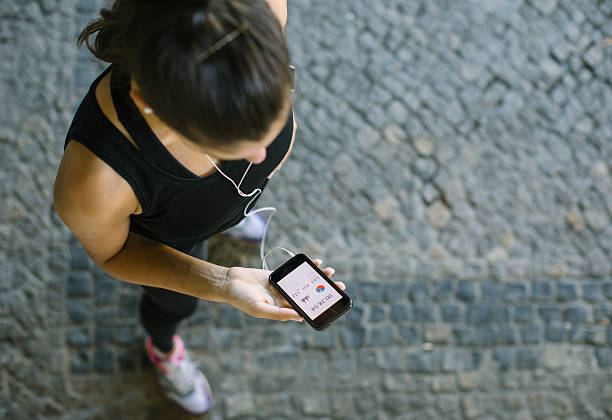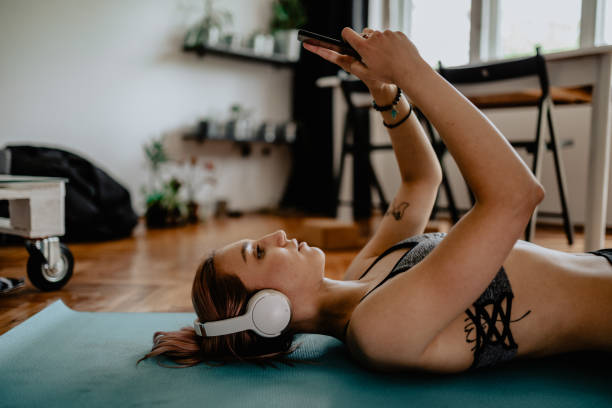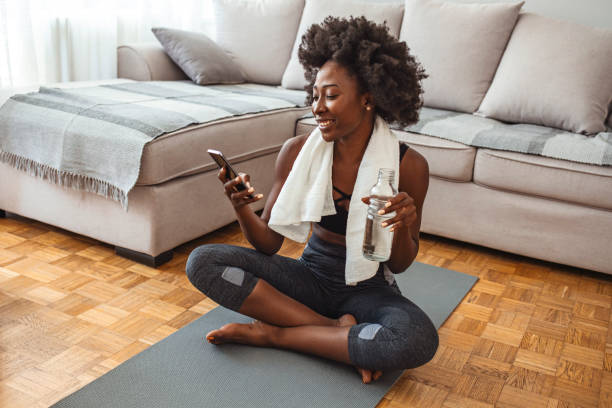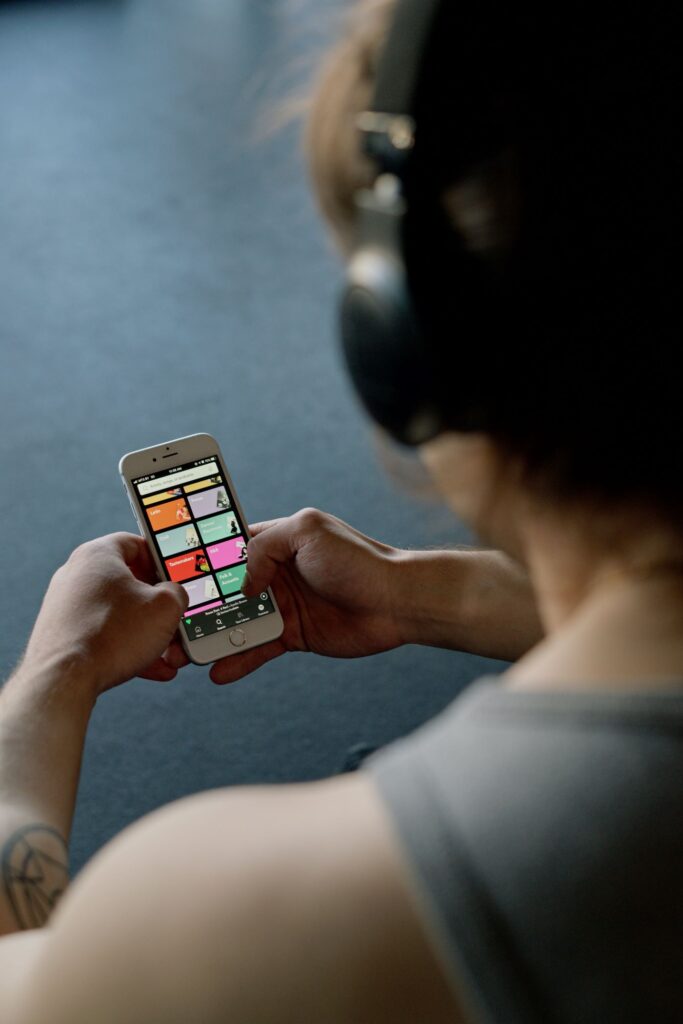Fitness Gadgets
What Is The Best Workout App For Beginners
When it comes to starting a fitness journey, deciding where to start might be difficult. With so many fitness applications available, it might be difficult to choose the ideal one for beginners. That is where we come in. We’ve done the research and testing to help you choose the best exercise app for your specific fitness objectives.
Whether you want to enhance your general health, lose weight, or gain muscle, there is a workout app for you. With the correct app, you can access a wide range of workouts, measure your progress, and stay inspired. However, not all workout apps are created equal, so choose one that is user-friendly and geared to your fitness level. In this article, we’ll look at the best workout apps for beginners and help you select the right one to get you started on your fitness journey.

Choosing the Right Workout App
If you’re new to fitness and searching for an app to help you get started, there are a few things to consider before selecting the best one for you. Here are some important things to bear in mind:
Understanding Different Types of Workouts
Before selecting a workout app, it’s critical to understand the many types of workouts accessible. Some applications specialize in a certain form of fitness, such as yoga or strength training, whereas others provide a variety of possibilities. When selecting an app, keep your workout preferences and fitness goals in mind.
Features to Look for in Beginner-Friendly Apps
When looking for a beginner-friendly fitness app, consider the following aspects. Look for an app that provides clear instructions, demonstrations, and customizations for different fitness levels. It’s also useful if the app provides a range of workouts and lets you measure your progress.
Top Recommended Apps for Beginners
There are numerous fitness applications available, but some are more appropriate for beginners than others. Here are some of our top choices.
- Nike Training Club: This app provides a variety of routines, such as weight training, yoga, and cardio. It also offers clear instructions and examples, as well as adaptations to accommodate different fitness levels.
- Aaptiv: Aaptiv provides audio-based workouts, which are useful if you prefer to concentrate on your workout rather than staring at a screen. The app provides a variety of routines, such as jogging, strength training, and yoga.
- Peloton: While Peloton is known for its high-end fitness equipment, the app also provides a variety of routines that do not require any equipment. The program provides clear instructions and demonstrations, as well as a range of workout options.
- Fiit: Fiit: provides a variety of workout options, including strength training, cardio, and yoga. The program provides clear instructions and demonstrations, as well as a range of workout lengths and difficulty levels.
- Obe Fitness: provides a variety of workout options, including weight training, cardio, and dance. The program provides clear instructions and demonstrations, as well as a range of workout lengths and difficulty levels.
When selecting a fitness app, think about if you prefer a free version or are willing to pay for a subscription. Many applications have a free trial period, which can be an effective method to test the app before committing to a subscription. Additionally, some applications include challenges or emphasis on weight loss, so consider your fitness objectives while selecting an app. Finally, examine whether the app is compatible with other fitness applications or devices, such as Strava or the Apple Watch, and whether it has features like meditation or music to improve your workout experience.

Getting Started with Workout Apps
If you’re new to fitness, workout apps can help you get started. A fitness app allows you to build a training plan, track your progress, and receive assistance from a personal trainer. In this section, we’ll go over the fundamentals of getting started with workout applications.
Setting Up Your Profile
The first step in getting started with a workout app is to create your profile. This normally entails entering your age, weight, height, and fitness level. Some apps may also ask about your fitness objectives, such as weight loss or muscle gain.
Once you’ve created your profile, you can begin browsing the app and discovering training routines that are appropriate for your fitness level and goals. Many apps provide a variety of training regimens tailored for novices, allowing you to start with a program that is suited for your fitness level.
Navigating Your First Workouts
Once you’ve discovered an appropriate training regimen, it’s time to begin your first workout. Most workout applications will provide you with a library of exercises to pick from, as well as video demonstrations of each activity to help you get started.
When you initially start off, it’s crucial to take things slowly and avoid pushing yourself too hard. It’s also a good idea to concentrate on perfect form and technique rather than attempting to lift huge weights or do complex workouts.
Tracking Progress
One advantage of utilizing a workout app is that you can monitor your progress over time. Many applications include built-in fitness trackers that allow you to log your workouts and monitor your progress toward your fitness objectives.
As you progress through your workouts, you may notice that your fitness improves and you are able to perform more complex activities. Listen to your body and avoid pushing yourself too hard, as this might lead to damage.
In conclusion, workout apps might be an excellent method to begin your fitness journey. Setting up your profile, navigating your initial workouts, and tracking your progress will provide you with the advice and support you need to reach your fitness objectives.

Maximizing Workout Effectiveness
To gain the finest benefits from your workouts, you must maximize the effectiveness of each session. Here are a couple ways to do this:
Incorporating Various Exercise Forms
Incorporating a variety of exercise styles is an excellent approach to push your body while avoiding plateauing. Changing up your training routine allows you to target different muscle regions while also avoiding boredom. For example, if you enjoy strength training, try incorporating some cardio exercises such as running, indoor cycling, or treadmill workouts. You can also attempt workout programs like barre, CrossFit, or sculpt to push your body in new ways.
Understanding Workout Nutrition
Workout nutrition is vital for fueling your body and increasing workout effectiveness. A well-balanced diet rich in protein, carbs, and healthy fats will help you gain muscle, burn fat, and recover more quickly. Meal planning is a fantastic strategy to ensure that your body receives all of the nutrients it requires to function optimally.
Leveraging Equipment and Accessories
Using equipment and accessories allows you to target certain muscle groups and make your workouts more difficult. Dumbbells and barbells, for example, can help you gain strength, whilst resistance bands can help you tone and shape your muscles. If you have a home gym, investing in fitness equipment such as exercise cycles, treadmills, and strength and conditioning machines can help you meet your fitness goals.
To summarize, including a variety of exercise forms, understanding workout nutrition, and utilizing equipment and accessories are excellent strategies to increase workout effectiveness. Following these suggestions can help you attain your fitness objectives faster and more efficiently.

Evolving Your Fitness Routine
When beginning a fitness routine, it is critical to devise a strategy that works for you. However, as you progress, you must adapt your program to continue experiencing results. Here are some pointers for discovering advanced features, remaining motivated through challenges and community, and planning for long-term fitness.
Exploring Advanced Features
As you become more familiar with your workout app, you can begin to explore advanced options. Many applications provide a variety of training options, including on-demand sessions and live classes with professional trainers. Some apps also provide individualized workout regimens and personal training sessions.
It’s also critical to work on stretching and healing. Many fitness apps include stretching routines and recuperation sessions to help you avoid injuries and increase flexibility.
Staying Motivated with Challenges and Community
Staying motivated can be difficult, especially when exercising alone. That’s why many fitness apps include challenges and a community to help you stay on track. Challenges can range from jumping jacks to studio-style workouts. Some apps even include challenges with celebrities such as Chris Hemsworth!
The community component of training applications can also be useful. Many apps provide forums or communities where users may interact and help one another. This might be especially beneficial for individuals new to fitness.
Planning for Long-Term Fitness
While short-term goals should be prioritized, long-term fitness planning is equally critical. Many workout apps provide training regimens that are intended to help you improve over time. These programs often contain a combination of workouts, meal plans, and coaching.
When making long-term plans, you should also consider your fitness level. Many applications provide quizzes or exams to help you establish your fitness level and devise a strategy that works for you.
Finally, take advantage of trial periods and limited-time promotions. Many workout apps provide free workouts or a trial period to help you decide whether the program is perfect for you.
Conclusion
One standout aspect of the top-tier workout apps is their accessibility and user-friendly interfaces, making them perfectly tailored for someone starting their fitness adventure. These apps understand the unique needs of beginners, offering structured guidance, clear instructions, and gradual progressions that accommodate varying fitness levels.
The element of customization has been a key factor in my exploration. The best workout apps for beginners excel in providing tailored exercise routines that align with individual goals, whether it’s weight loss, strength building, or overall fitness. The ability to personalize workouts based on my preferences, time constraints, and desired intensity has made the fitness journey not only effective but also enjoyable.
Another game-changing feature has been the diverse range of workouts offered by these apps. From quick home workouts to guided sessions at the gym, the variety ensures that beginners can experiment and find what resonates best with their preferences. Whether it’s yoga, HIIT, or strength training, the best workout apps cater to a spectrum of interests, keeping the fitness routine engaging and dynamic.
Journey of self discovery


